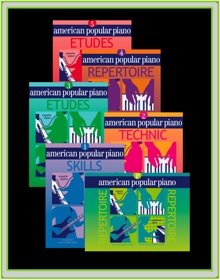The VDM-Musikschulkongress is a bi-annual event for German music school teachers. It was held in Berlin, at the International Congress Center.

I was invited by Heiko Kremers, product manager for digital pianos and digital keyboards for Roland Germany (http://www.rolandmusik.de) Heiko saw me quite a few years ago at an event in Flensburg, way up north (near the Danish border) and was struck by my rapport with music teachers. So he asked me to come to this event and talk to German teachers about Microjazz and the HPi-7s piano.
If you look at the Contacts and Links section of my website, (www.christophernorton.com) you’ll see a reference to the Roland HPi-6. Roland decided to include 50 Microjazz pieces as one of the categories that are embedded in this HP range of pianos, along with classical pieces, popular songs, childrens’ songs etc.
On the Friday, I gave an hour’s presentation. I started by introducing the sound of the Microjazz series and quickly moved onto its value in a teaching situation. Among other things, I highlighted:
• Children like the sound and style of many of the pieces right away
• It introduces the sounds (and voicings) of many contemporary popular piano styles from an early stage
• The variety of articulation, the use of the whole piano and the varied dynamics all make the series useful on many levels pedagogically
• Microjazz improves music reading
The teachers agreed with these and other points about Microjazz and even helped me to play some of the pieces, either solo pieces played by 2 people or duets. But they also agreed with me that it is difficult to get children to practice at home, no matter how much they like the music! The HP piano series helps to overcome this resistance to practicing in various ways.
First of all, you can hear the composer’s own performances from the Microjazz section of the HP piano. It demonstrates how the pieces should be phrased and articulated. You can play along with the composer, either separate hands (with a built-in metronome) or hands together. You can slow the tempo down as much as you like if the piece is proving tricky! So point 1 is that the HP piano enables the student to hear up to 50 pieces, choose what they would like to play and then play along separate hands or hands together at whatever speed is comfortable. The music for each piece scrolls along on the very easy-to-read screen in the centre of the piano (so music reading is being encouraged all the time)
Point 2 is that there are great backings that go with the piano parts and these enable the student to have a backup band while playing. It also gives a student a very good idea of how a style sounds once guitar, bass, drums etc are added. Teachers were very happy with the sound of all this, as you can see with this picture of 2 happy teachers from Uelzen:

But the really useful aspect of the HP piano came next – you can select Visual Lesson and select Beginners Course, Repertoire Course or Challenge Course. In the Beginners’ Course, the right hand part of a piece is played and displayed and you are invited to choose a comfortable speed and then record your own performance, following the music as you do so. Once you have recorded, a screen comes up that gives you a score (out of 100) and comments if there are things you need to improve. You can then look at a score of your performance and, using arrows, scroll backwards and forwards through your performance. Pitch mistakes are highlighted in one colour, rhythm mistakes in another. You can then re-record and see if you can improve your score.
The Repertoire Course and Challenge Course give you the chance to record separate hands (or both) and to pre-set various slower speeds.
The teachers agreed that the combination of Microjazz and the HP pianos is a very interesting one that could benefit the teacher in many ways. Getting students to practice music they like – that’s the formula!
On the Saturday I did a couple of presentations on the Roland stand and we gathered quite a crowd. Here are some of the German teachers who stayed to listen:
















No comments:
Post a Comment